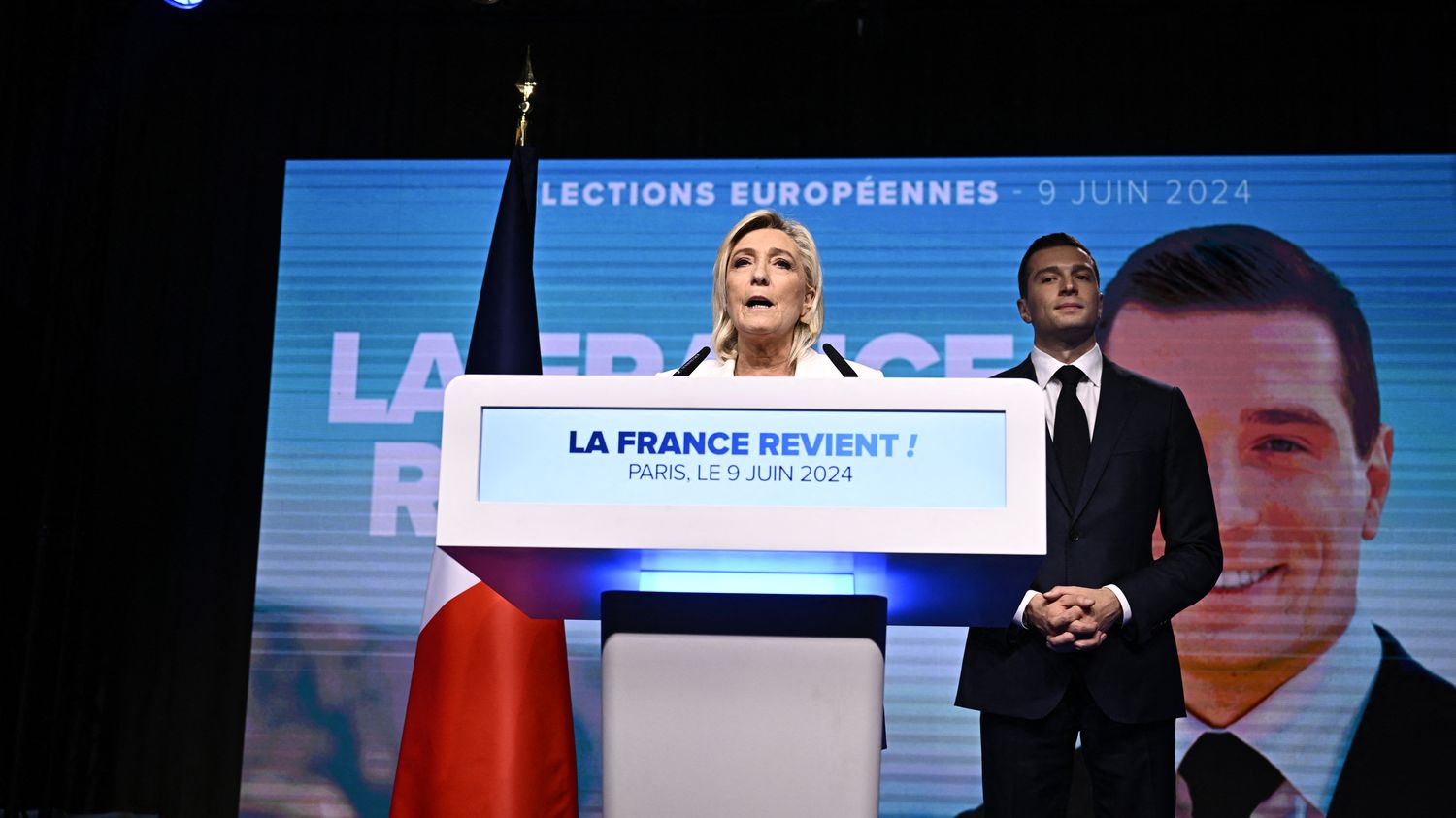The far-right party brings together voters in all age and socio-professional categories. It also managed to establish itself in territories where it had previously struggled.
The expected tidal wave did indeed take place. The National Rally is the big winner of the European election in France, Sunday June 9. The far-right party obtained 31.36% of the vote in the nationwide vote compared to 23.2% in 2019, an increase of more than 8 points. The campaign aroused more interest than expected and the turnout at the polls increased further. But the score of Jordan Bardella, head of the far-right party list, was not affected by this increased participation (51.5% compared to 50.12% in 2019).
So what is the profile of RN voters during this vote? This surge in the RN is relatively homogeneous across all age categories, according to a survey carried out by the Ipsos institute for France Télévisions, Radio France, France 24, RFI, Public Senate and LCP-National Assembly. It is particularly marked among 18-24 year olds (+9 points) and among 25-34 year olds (+10). This increase, observed in all socio-professional categories, is even more marked among workers (54% compared to 40% in 2019) and employees (40% compared to 27%).
At the same time, the increase in the RN vote is spectacular in households declaring more than 3,000 euros of income per month, the upper bracket retained by Ipsos, since 30% of them chose to vote RN, compared to 18% in 2019. “The RN has new electorates to conquer: CSP+, graduates, retirees…underlines political scientist Benjamin Morel, lecturer at Paris 2 University, on franceinfo. Today, the dam no longer works, it had already not worked in 2022.”
It is also 8% of Jean-Luc Mélenchon’s voters, 7% of those of Emmanuel Macron and 18% of those of Valérie Pécresse in the first round of the 2022 presidential election who this time chose to vote for the RN, again according to this Ipsos survey. During the 2019 European election, the party had already attracted 18% of voters for the right-wing candidate, François Fillon, in the 2017 presidential election. “We are one of the rare countries in Europe where the conservative right is so marginalized”, analysis for franceinfo Jean-Yves Camus. The political scientist points to the desertion of part of the Republican electorate, which has once again turned towards the RN or the presidential majority.
“There are many dimensions to the RN’s vote. You have a vote linked to anger towards the situation in the country, you have a vote nevertheless associated with logics of hostility to immigration, of racismanalysis on franceinfo Mathieu Gallard, research director at Ipsos. And then you have a dimension which was important in these European elections, it is quite simply the extremely strong unpopularity of the power in place, of Emmanuel Macron, of his government…” Many voters, according to him, turned “towards the opposition which seemed to them the most solid”.
This election also confirms an underlying trend: the RN has an increasingly broad electoral base. In total, 42% of its voters had already made their choice at least a month ago, far ahead of the other lists: 16% of voters in the presidential camp and 11% for the PS-Place publique had made their choice more than thirty days before the election.
“There is, in entire parts of the territory, real roots of the National Rally, which is now a strong party, and has even come out on top in many elections for a very long timeunderlines Mathieu Gallard. There is a spread, a progression of the RN in certain regions which were rather hostile to it in the past. Marine Le Pen’s party effectively continues to establish itself everywhere, including in the Massif Central or in the South-West, where the party achieved its lowest scores in 2019. It thus comes first in all regions ( France and overseas), with the exception of Martinique (behind La France insoumise by less than one point).
Particularly notable, the RN won, for the first time, a symbolic first place in Brittany. In this region, long resistant to the frontist vote, Jordan Bardella’s list obtained 25.58%, compared to 17.32% in the 2019 European elections. The RN even achieved the Grand Slam, coming in first in the four Breton departments (Finistère , Ille-et-Vilaine, Morbihan and Côtes-d’Armor). “It’s a real earthquake!”welcomed the far-right group, which still described Brittany as “mission land” few years ago.
The party also achieved unprecedented scores in certain municipalities, such as Châteauneuf-les-Martigues (54.78%), a town of 15,000 inhabitants in the industrial-port area close to Marseille, Saintes-Maries-de-la-Mer ( 54.34%), 2,600 inhabitants, in Camargue, or even Marignane (54.26%), 33,000 inhabitants, which was one of the first cities in France to elect a far-right mayor. The RN, on the other hand, is still struggling to achieve similar scores in very large cities. “Even in Brittany, during the last presidential election, we still saw that there was progress. We are continuing the trend”analyzes Mathieu Gallard.
“Analysis by territory (large city, peri-urban, rural) is a reality, but a reality that requires nuancehe continues. In most large cities, the RN actually remains at low levels. But there are large cities, in the south of France in particular, rather in decline, with an impoverished city center where the RN is exploding. Conversely, there are rather dynamic rural areas, still in the west of France in particular, where the RN certainly comes in first position, but it is well below its national average.
In any case, this large victory of the RN, greeted with an explosion of joy by its activists, contributes to the rise in power of the nationalist and sovereignist camp in the European Parliament. In France, it pushed Emmanuel Macron to dissolve the National Assembly, which reverses the political chessboard before the summer. Guest on franceinfo, Monday morning, the spokesperson for the RN, Laurent Jacobelli, spoke with a smile about “first day of the end of macronia”.
